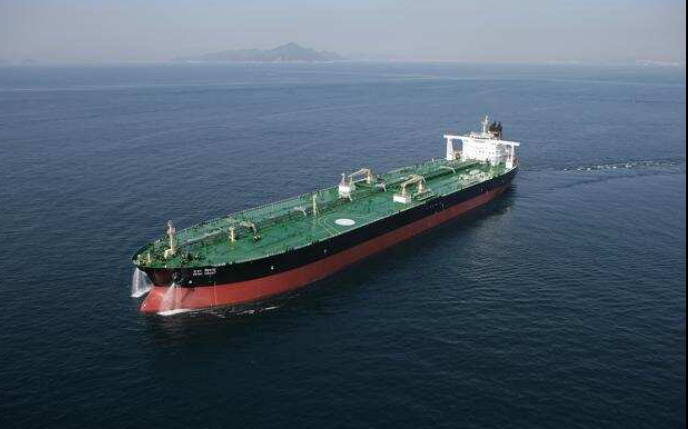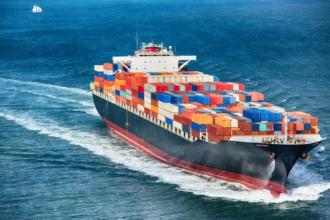The history of travel and trade by sea extends back at least 5,000 years. While historians debate which civilization first established sea-based trade, they concur that in the past 1,500 years, most civilizations and nations that achieved wealth and power did so through maritime trade.
Ismail Zafar Khan Written by Ismail Zafar Khan June 14, 2024
A famous general of ancient Greece, Themistocles once said: “He who controls the sea controls everything” (Greek General Themistocles 524- 459 BCE). Today, 2500 years later, the statement of the Greek General has been proved to be the utmost truth. Today, if the United States is the world’s superpower, a big reason for it is its powerful navy. To maintain its presence and control over the world’s Oceans, the United States has military bases around the world. The Importance of controlling international waters can be gauged from the fact that the United States spends more on its Navy than it does on its Army and Air Force. (United States of America’s Military Budget request for fiscal year 2024-25—Navy: US$ 203.9, Air Force: US$ 188.1, Army: US$ 185.8.)
Despite the development of Land and Air Routes, 85% of the world’s trade is still carried out by sea. We will explore the brief history of Maritime Trade, why Maritime Trade is preferred over land, Rail and Air Trade. International Sea Trade Routes and Sensitive choke points around the World, where the dangers of war often loom large
The history of travel and trade by sea is at least 5,000 years old. Historians differ as to which was the first civilization to base its trade on the sea. But all historians agree that in the last 1500 years, most of the Civilizations and Nations that gained wealth and power, they have done it through maritime trade. It was through maritime trade that such nations spread their Religion, Culture, Language, Knowledge, and Technology all over the world and increased their influence all over the world. A great example of this is the “Indian Ocean Trade Route”. This trade route was the largest maritime trade route in the world from the 7th century to the 15th century.
Indian Ocean trade route connected the African Swahili coast, the Arabian Peninsula, the Indian Subcontinent, Sri Lanka, Indonesia, Malaysia, and China. The trade through this route was so extensive that it was considered larger than the famous Silk Road in terms of trade volume. Wood, Silk, Cotton, Gold, Coffee, Rice, Porcelain utensils, and spices were traded through the Indian Ocean trade route. It was through this sea trade route that Islam spread to many countries around the Indian Ocean. These countries included Tanzania, Kenya, Mozambique, Somalia, India, Pakistan, Sri Lanka, Bangladesh, Malaysia, and Indonesia etc. In the 15th and 16th Centuries, European expeditions from Spain and Portugal went on missions to explore new maritime trade routes. Christopher Columbus crossed the Atlantic Ocean and discovered the Americas. Following this discovery, Spain and Portugal colonized the continents of North and South America. Europeans also brought with them infectious diseases such as smallpox, measles, and cholera. These diseases were new to the indigenous peoples of North and South America, and their bodies did not have the immunity to fight them. As a result, a large part of the local population began to die from these diseases. A large part of the remaining surviving local populations were selectively massacred by the Europeans. After clearing (massacre) the indigenous populations of North and South America, Europeans began to settle their people there.
Today, the indigenous population constitutes only 7% of the total population of the Americas. Following the occupation of the Americas, Spain and Portugal made full use of the natural resources of the continents. As a result of the wealth gained from here, both the countries became superpowers of the world. The Portuguese explored Vasco da Gama and discovered the first sea route from Europe to India along the coast of Africa. The discovery of a new route created new attractive trade opportunities for the Portuguese with India and Africa. Portugal became the world’s largest power as a result of this trade in spices from India and gold from Africa. At the same time, the Indian Ocean trade was taken over by Portugal. Seeing the success of Portugal and Spain, a race started to colonize the world among the European nations. These colonial powers included Britain, the Dutch, the Italians, the Belgians, the French, and the Germans. From the 16th century to the 20th century, these nations colonized areas ranging from the Americas to Africa, India, Malaysia, Indonesia, and China. The British East India Company came to India for trade through the route discovered by the Portuguese. The East India Company, which came for trade, saw the opportunity and took over the whole of India. By exploring the resources of India and the rest of its colonies, and by exclusively trading with these countries Britain accumulated more power and wealth. And Britain became the world’s superpower. Britain’s rule on the world lasted from the eighteenth century to the twentieth century. By the end of the eighteenth century, the whole world was connected by sea. Now, the European colonial powers began the process of making the maritime trade routes easier and shorter. The greatest effort in this regard was the construction of the Suez Canal in the mid-nineteenth century.
Also read: PM Narendra Modi’s Visit To Italy For The G7 Summit: Key Highlights
In 1854, French engineers began digging a canal in Egypt. The purpose of the 193-km long canal was to connect the Mediterranean Sea with the Red Sea to create a new sea route. The construction of the Suez Canal on Egyptian soil shortened the trade route between Asia and Europe. To reach London from the Indian Ocean, one first had to take a sea route along the coast of Africa, which was about twenty thousand km long and took about 30 days. In comparison, the route of the Suez Canal was about 7,000 km shorter. And it took less than 10 days and the fuel savings were an extra advantage. Even today, the Suez Canal is a very busy route, accounting for 8% of the world’s maritime trade. Today, Egypt also charges a hefty fee from ships passing through the canal. Egypt earns US $ 5.5 BILLION a year in foreign exchange from the Suez Canal. After the construction of the Suez Canal in 1869, the next revolution in world maritime trade came in 1914 when the Panama Canal was built. The 82- km long Canal was built to connect the Pacific Ocean with the Atlantic Ocean, carving a new sea route.
For example, if a ship were to sail from the east coast of the United States to the west coast of the United States, it would have to circumnavigate the continents of South America. However, with the construction of the Panama Canal, the route became shorter by 15000 km. And it took less than 20 days and fuel savings were in addition. Even Today, the Panama Canal route is very busty, accounting for 5% of the world’s maritime trade. Today, the Central American country of Panama charges a fee for ships passing through the canal. Panama earns US $ 1.7 Billion in foreign exchange annually from the Panama Canal. With the time, when the sea routes became shorter, there was also a great innovation in shipbuilding technology. At the beginning of the twentieth century, a ship was capable of carrying 3,000 tonnes of cargo. Today this capacity has increased 100 times. Today, a ship can carry up to 300,000 tonnes of cargo. Increasing the cargo capacity of ships has also significantly reduced the cost of transportation of goods. Maritime trade requires less energy than land trade. Therefore, maritime trade requires less fuel, which makes it cheaper than land trade. In addition, maritime trade makes it easier to handle freight management. Accidents are also reduced due to the relatively safer voyage. And it also does relatively little damage to the environment. For these reasons, trade by sea is still preferred over trade by land or air. Even today, 85% of the world’s trade is done by sea, 9% by road, 5% by rail, and only 1% by air. If we study the current maritime trade, we find that developed countries trade heavily with each other. For example, the trade route between Europe and the United States through the Atlantic Ocean is very busy. It means, there is a lot of trade between these countries. Even traditionally, the Atlantic Ocean trade route has been very busy. But in the 21st century, the dynamics of sea routes have changed. In the 21st century, Far East Asian Countries have also made great industrial progress.
The countries of Far East Asia are considered the leaders of maritime trade in the world in the 21st Century. These countries include China, Japan, South Korea, Singapore, Malaysia and Taiwan. Being at the forefront of maritime trade means that these countries also have very developed industrial sectors. These countries import crude oil and raw materials from the Middle East, Australia, and African countries by sea. The raw materials and crude oil run the industries of these countries. These Far East Asian countries also export the finished products made in their industries by sea. Over the past three decades, China’s industrial development in particular has reached its peak. And it has emerged as the world’s largest exporter. China’s industrial growth can be gauged from the fact that 9 out of the world’s 20 largest commercial ports are in China.
Choke Points or Narrow Waterways on the Sea Trade Routes of the World
Choke points are narrow lanes in the Ocean where traffic pressure is high. Choke points are easier to block, which can stop all traffic on this route. If the maritime traffic is stopped, all trade closures could severely damage the economies of developed countries. To avoid this situation, powerful countries maintain their naval presence at various strategic points in the sea at all times. Due to geopolitics around these maritime routes, there is often tension between powerful countries. The Panama Canal and the Suez Canal are two major choke points among other choke points such as Bosporus Strait, Hormuz Strait, Bab-el Mandeb Strait, Gibraltar Strait, and Malacca Strait etc.
Also read: PM Modi Engages In Talks With President Macron As India-France Ties Strengthen
The Strait of Malacca is located between Malaysia, Indonesia and Singapore. At one point, this strait is so narrow that its width is reduced to about 3 km. About 25% of the world’s trade passes through the Strait of Malacca. All oil supplies to China from the Middle East pass this route. That’s why the Malacca Strait is the backbone of the Chinese economy. China is building alternative supply routes to end its sole dependence on the Malacca Strait. CPEC (China- Pakistan Economic Corridor) is also one of these alternative routes. The other major choke point is the Strait of Hormuz. The Strait of Hormuz is located in the northeast of the Arabian Peninsula between Iran and Oman. The Strait of Hormuz is only 55 km wide and it connects the Persian Gulf with Arabian Sea. Middle Eastern countries export their oil to the world through the Strait of Hormuz. These countries include Saudi Arabia, Iraq, Kuwait, the United Arab Emirates, Iran and Qatar. About 21% of the world’s oil is supplied through the Strait of Hormuz. That’s why the Strait of Hormuz is so important to these countries. Because Iran can easily close the Strait of Hormuz, the US Navy is present around the sea. Tensions between the Iranian and US Navies have also been frequent in the region. The third major choke point is the Bab-el-Mandeb Strait. It is located in the southwest of the Arab Peninsula between Yemen and Djibouti. The Bab-el-Mandeb Strait is only 28 km wide and connects the Red Sea with the Arabian Sea. The Bab-el-Mandeb Strait is extremely important because most traffic from Asia to Europe first passes through the Bab-el-Mandeb Strait and then through the Suez Canal. Because of the strategic importance of the Bab-el Mandeb Strait a war in being carried out in Yemen between Iranian-backed Houthi rebels and Saudi coalition forces. Somali Pirates are also a threat around Bab-el Mandeb Strait. Due to the special importance of the Bab el-Mandeb Strait and the prevailing situation in the region, a small country like Djibouti houses military bases of five countries. Countries with military bases include the United States, France, Italy, China, and Japan.AX








